
New Electrochemical Technology Could De-acidify the Oceans
from rocks along coastlines act to counterbalance this acidity, in a process called geological weathering, but the extreme increase in the rate and volume of CO2 emissions, especially over the last 60 years, has far exceeded the rate of geological weathering, leading to a 30 per cent increase in ocean acidity.As the oceans acidify, millions of marine species and whole ecosystems — especially coral reefs — will be unable to adapt.We are overwhelming the Earth’s natural re-balancing systems and harming its ecosystems in the process. Our recent work at McMaster University and the University
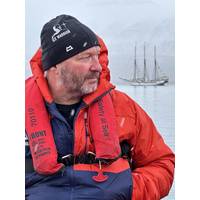
Jim McNeill is Leading Earth’s Citizen Warriors Across the Sea
and crew members were tasked with “building an understanding of the vessel and her capabilities” to maximize the potential for scientific data capture. Ocean Warrior aims to install and test a variety of equipment to measure indicators like water quality, plankton, eDNA, salinity and ocean acidity, including weather stations, FerryBox, CTD, bathymetry, communications and safety. The instrumentation to be used on board by the team will be sorted by February 2024 through a consortium of ocean scientists, shared McNeill. Additionally, an online dashboard will convey findings and share stories
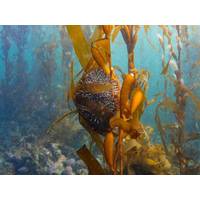
NZ’s Vital Kelp Forests are in Peril from Ocean Warming
Years of almost non-stop marine heatwaves are stressing New Zealand’s kelp forests. But as we show in our new research, ongoing ocean warming is only one of several threats to these unique and important coastal seaweed ecosystems.Many seaweed species are sensitive to changes in the ocean’s acidity and coastal “darkening” – changes in colour and clarity – is forcing some to retreat to shallower waters. All these stress factors combined place these crucial habitats in peril, with consequences for all species that depend on them.New Zealand has the ninth longest
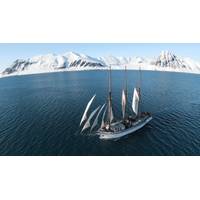
Scientists to Study the Arctic in a Wooden Schooner
.Travelling to seldom-visited areas of the ocean each year between June and October, Ocean Warrior intends to cover 10,000 nautical miles each year, over the next 10 years, collecting data on a range of key ‘indicators’ – in areas such as water quality, plankton, eDNA, salinity and ocean acidity.This will help scientists gain a clearer understanding of the pace of changes taking place, their impacts on marine ecosystems, and what the future may hold for the Arctic region and the wildlife, populations and economies which depend upon it."Our quest is to help scientists put a better

Using the Ocean to Fight Climate Change Raises Serious Environmental Justice and Technical Questions
mangrove forests, may promote biodiversity and benefit nearby human communities.However, other options could introduce novel risks. For example, growing and then sinking large amounts of kelp or algae could bring in invasive species. Dissolving certain types of rock in the ocean could reduce ocean acidity. This would enhance the ocean’s ability to store carbon dioxide, but these rocks could also contain trace amounts of metals that could harm marine life, and these risks are not well understood.Phytoplankton can grow explosively over a few days or weeks. Ocean fertilization is designed to
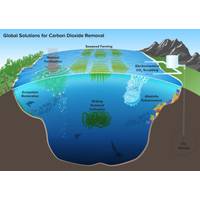
Carbon Dioxide Removal (CDR) ... To Clear the Air, Look Beneath the Waves
; the marine alga gets everything it needs from the surrounding environment. Seaweed is also quickly becoming popular for bioplastics, animal feed supplements and fertilizer replacement, which further offsets emissions. Furthermore, seaweed farms provide refuge for local biodiversity, reducing ocean acidity and increasing oxygenation.To advance seaweed farming as a competitive and effective CDR technique, Oceans 2050 is conducting a study to better understand the process and the rate at which carbon dioxide is removed from the atmosphere. The study, which covers 20 farms in 12 countries, is nearly
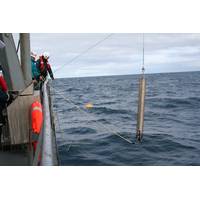
Listening to the Ocean Reveals a Hidden World – and How We Might Save It
;s not just noisy human activity that stops animals reliant on underwater sound from surviving and prospering. Climate change is having a complex effect on underwater soundscapes, and nowhere is this more clear than on coral reefs. When coral reefs bleach in response to rising temperatures and ocean acidity, there’s usually a dramatic reduction in the noises emanating from these habitats.On a healthy reef, the combined din of countless snapping shrimps, grunting gobies and other noisy coral critters creates an acoustic signpost which prospective larval reef dwellers drifting on oceanic currents
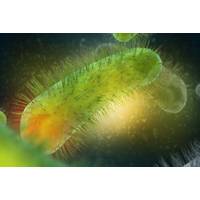
Study: Oceans Microscopic Plants Hold Keys to CO2 Capture
(CO2) from the atmosphere. They currently remove, or “fix,” 10 – 20 billion metric tons of CO2 every year by the process of photosynthesis. But not much is known about which biological mechanisms diatoms use, and whether these processes might become less effective with rising ocean acidity, temperatures, and, in particular, CO2 concentrations. A new study in Frontiers in Plant Science shows that diatoms predominantly use one pathway to concentrate CO2 at the vicinity of carbon fixing enzyme and that this continues to operate even at higher CO2 concentrations.“We show that

Measuring the Hostile Ocean Beneath Hurricanes
have required more than four hundred days at sea.Over time, Slocum gliders have been equipped with an increasing variety of oceanographic sensors, including an integrated current profiler. Physical properties such as water temperature and salinity are routinely measured. Gliders have also observed ocean acidity, chlorophyll, suspended sediments, and harmful algal blooms, as well as internal waves.Over 45 sensor suites have been integrated on Slocum gliders allowing them to serve a broad range of applications. During the Macondo oil spill in 2010 in the Gulf of Mexico, Slocum gliders collected subsurface


 February 2024
February 2024





